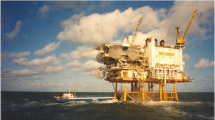Abstract
Norwegian authorities have for a long time been concerned about the risk of oil spills outside the Norwegian coast. One of the key measures adopted has been to reduce the risk of ship accidents by imposing sailing routes for heavy ship traffic (over 5,000 gross tonnages) with high environmental risk potential farther away from part of the coast. This article is based upon two reports which conducted risk assessments of imposing such sailing routes outside the entire Norwegian coast. These routes were proposed by an expert group consisting of relevant stakeholders. Data of traffic pattern and number of sailing were collected for the year 2008 using the universal Automatic Identification System (AIS). The proposed route was compared with 2008 traffic pattern in regard to the accident frequencies and the expected oil spills per year. An accident and oil spilling simulation program called MARCS was used to simulate these results. After conducting a traffic forecast for the year 2025, the simulation was again run and the results compared with the year 2008. In total, the proposed route is expected to reduce oil spills by 590 t per year in 2008 and by 3670 t in 2025. The main reason for this substantial reduction is that the number of groundings is reduced because of the distance from the shore being increased. The reduction was particularly strong for tankers.





Similar content being viewed by others
References
Akhtar J, Hansen VJ (2009) Effects of proposed ship routeing off the norwegian coast. Part 1 røst—utsira. Transport økonomisk institutt, 1036/2009
Akhtar J,Jean-Hansen V (2009) Effects of proposed ship routeing off the norwegian coast. Part 2 utsira—Oslo fjord. Transport økonomisk institutt, 1037/2009
Directorate NM (2011) Skipsulykker [online]. Norwegian Maritime Directorate. Available from: http://www.sjofartsdir.no/no/sikkerhet/statistikk/Datauttrekk/ [Accessed Access Date 2011]
Eriksen T, Høye G, Narheim B, Meland BJ (2006) Maritime traffic monotoring using a space-based AIS
Fowler T (2009) MARCS—a computer system for assessment and management of ship accident risks. Det Norske Veritas. Det Norske Veritas, London
Frantzen B, Bambulyak A (2008) Oil transport from the russian arctic. Is the barents sea environment at risk? Arctic Frontiers, January 2008, 20-25
Hovi IB, Madslien A (2008) Reviderte grunnprognoser for godstransport 2006–2004. Transport økonomisk institutt, 1001/2008
Kystverket (2006) Stamnettsutredning—kystverket troms og finnmark. Available from: http://www.kystverket.no/arch/_img/9430258.pdf
Loeng H, Drinkwater K (2007) An overview of the ecosystems of the barents and Norwegian seas and their response to climate variability. Deep-Sea Res 54
Sjøfartsdirektoratet (2009) 103 grunnstøtninger i 2008. Faktaark. Available from: http://www.sjofartsdir.no/no/Publikasjoner/Faktaark/
Thevik HJ, Sørgård E, Fowler T (2002) A method for assessing the risk of sea transportation: numerical examples for the Oslo fjord
Acknowledgment
We are very grateful to the Norwegian Coastal Administration, which has funded this research.
Author information
Authors and Affiliations
Corresponding author
Glossary
- AIS
-
Automatic Identification System. A ship-borne transponder broadcasting information about the ship, the voyage and several other safety related issues.
- Collision
-
An event type that occurs when a ship is struck by another ship.
- Drift grounding
-
An event type that occurs when a ship loses its ability to navigate, through loss of steering or propulsion, and is blown onto the shoreline before it is either taken in tow or is repaired.
- DWT
-
Dead weight tonnage
- Event frequency
-
The number of events, such as inter-ship collisions, that occur per year at a specified location or within a defined area.
- GT
-
Gross tonnage
- IMO
-
International Maritime Organization
- MARCS
-
Marine Accident Risk Calculation System. An accident and risk simulation programme developed by DNV Technica.
- NCA
-
The Norwegian Coastal Administration
- NM
-
Nautical mile = 1.852 km
- Powered grounding
-
An event type that occurs when a tanker collides with the shoreline whilst underway.
- Risk
-
The frequency of a hazard multiplied by its consequence. The term is, however, often used as the mere probability of an accident/incident with adverse consequences.
- SOLAS
-
International Convention for the Safety of Life at Sea
- Structural failure
-
An event type that occurs when a ship sinks in heavy weather or loses its structural integrity due to mechanical failure.
Rights and permissions
About this article
Cite this article
Akhtar, J., Bjørnskau, T. & Jean-Hansen, V. Oil spill risk analysis of routeing heavy ship traffic in Norwegian waters. WMU J Marit Affairs 11, 233–247 (2012). https://doi.org/10.1007/s13437-011-0016-8
Received:
Accepted:
Published:
Issue Date:
DOI: https://doi.org/10.1007/s13437-011-0016-8




